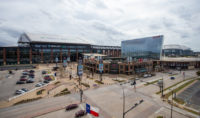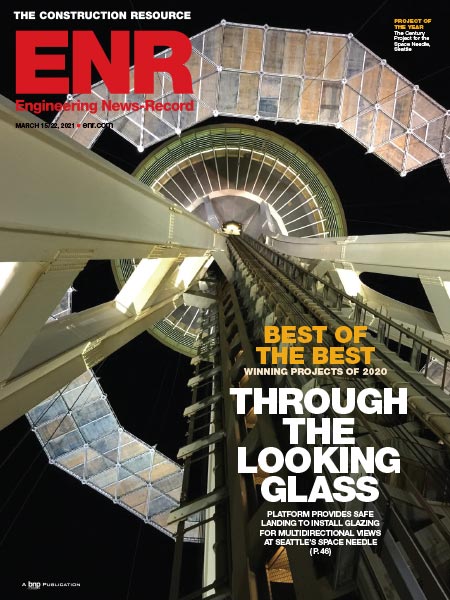For its part, the city agreed to improve nearby streets and pedestrian walkways around the stadium. Permitting also began to allow purchase of an adjacent 81-acre property to develop a community soccer complex tied to the stadium for joint-use activities.
Construction Begins
Shumate Constructors Inc., Albuquerque, began excavation in February and is on target for an early summer 2013 delivery. The track and field component is expected in spring 2014, which will allow for the grass field to root prior to actual play. The district plans softball fields and tennis courts on the remaining acreage.
Franklin's Earthmoving of Albuquerque is expected to deliver a separate civil/infrastructure package at about the same time as the stadium. "APS worked with the city to design expanded roadways and intersections with traffic signals to handle game traffic," says Karen Alarid, director of Facilities Design + Construction for the district. "Landscaping will be provided along the roadways, which will blend in with the neighborhood's existing landscaping."
Located just a mile from Petroglyph National Monument, the LEED-Silver design also aims to lessen the environmental impact of the stadium through water harvesting, geothermal wells and solar photovoltaics.
Because of the relationship-building with its neighbors and regional stakeholders, APS was presented with a Public Partnership Award in August by the Mid-Region Council of Governments of New Mexico.
With construction occurring at the edge of the city, the contractor has had to contend with the area's high winds and lack of water. Shumate had to truck in generators and water. "We made it a priority to control the blowing sand at the project site to mitigate any further concerns from our neighbors surrounding the project," says Dennis Thompson, Shumate project manager.
In June, the contractor was rocked by the death of Mark Shumate, company president. "He was very involved and committed to the company, so everyone involved in the project was impacted on a personal level," Thompson says. "As such, the jobsite took a few steps back in the weeks following his passing, but then proceeded full steam ahead."
Into the Wildcats’ Den
The University of Arizona stadium was built in 1928 and has had multiple additions since. With architectural and structural engineering design by Heery International Inc., Atlanta, the current project adds premium seating and fan amenities, relocates and expands facilities for the Wildcats football program and adds new concourses with improved disability access.













